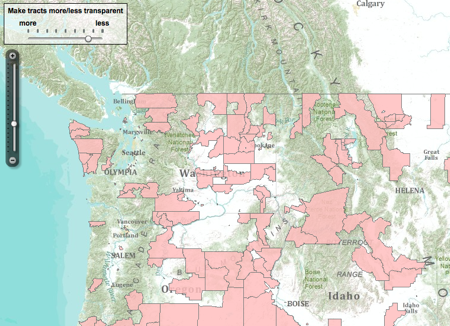Luigi and I had the same response to the USDA’s Food Desert Locator: wow!
[A] food desert [is] a low-income census tract where a substantial number or share of residents has low access to a supermarket or large grocery store.
Here’s a little section of the country.

Astonishing in itself, what seems most thrilling is that the entire dataset is downloadable, which suggests all sorts of possible mash-ups: farmers’ markets, poverty, obesity, school journeys, Starbucks locations. The sky’s the limit. Not that correlation is causality, of course.

